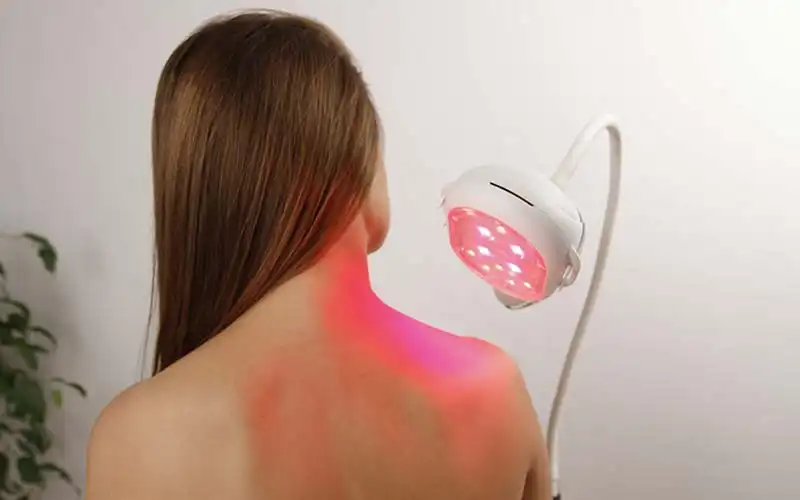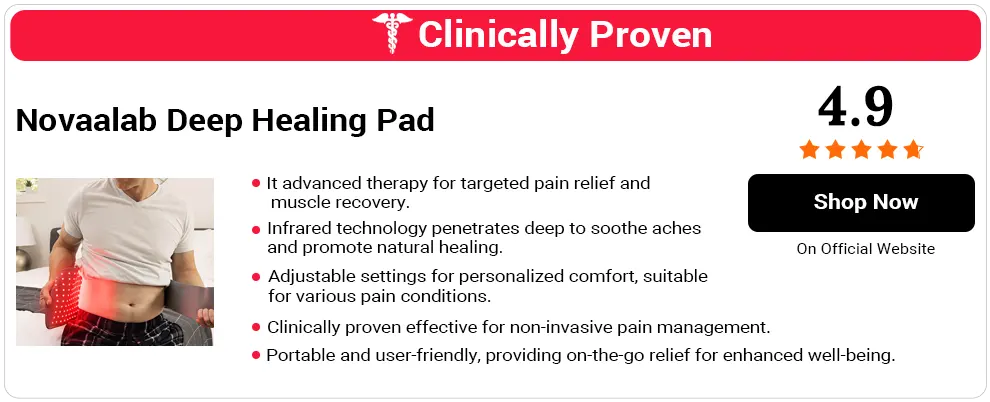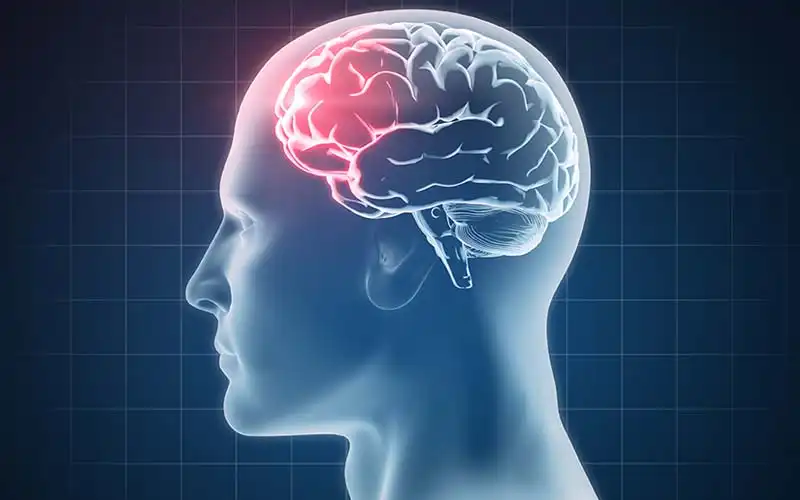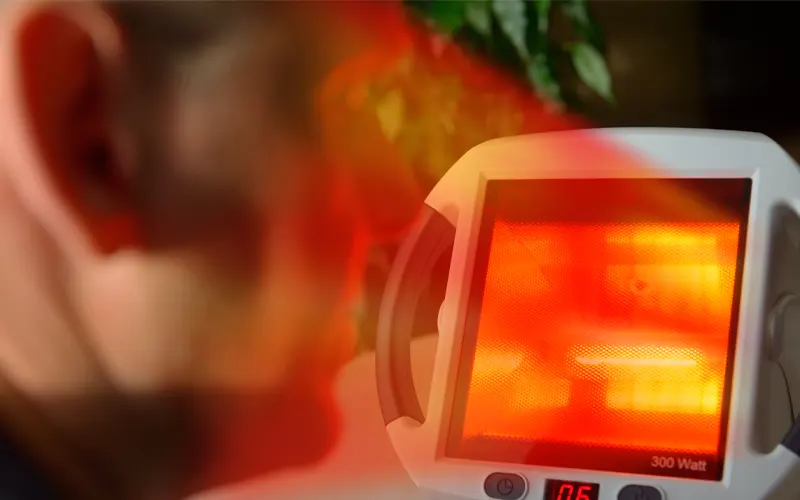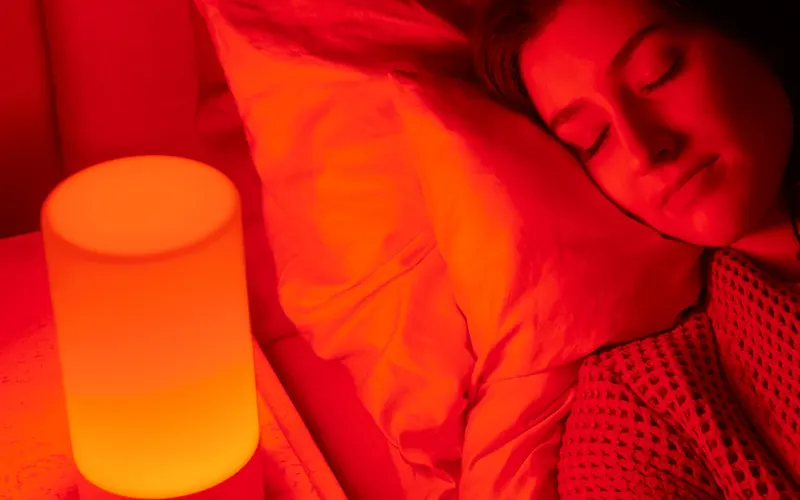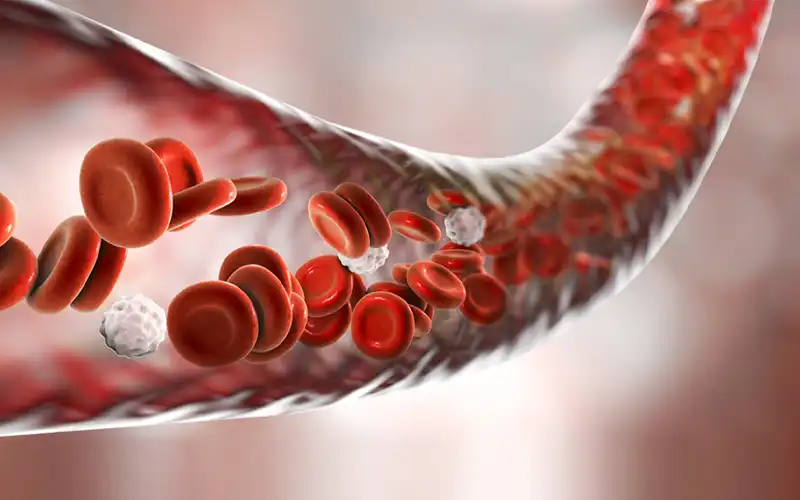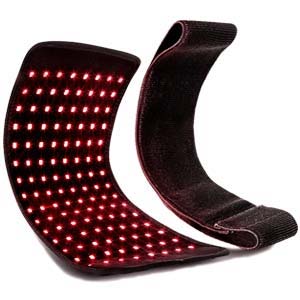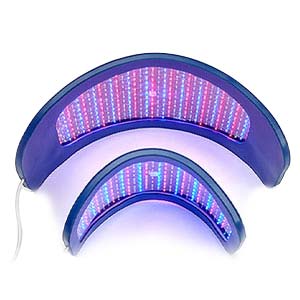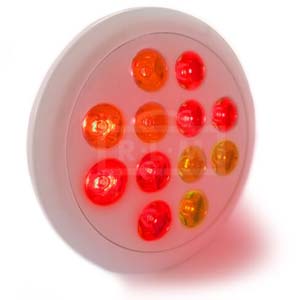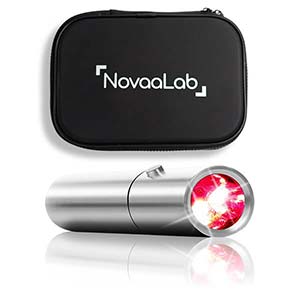The red-light therapy technology is quickly gaining popularity and one reason is that its results are evident and verifiable among users. In fact, based on previous and even ongoing research, this low-wavelength treatment shows promising effects in the treatment of certain types of pain including osteoarthritis, and joint, neck, knee, and back pains.
Overview
Red Light Therapy is an effective, painless, and natural treatment for pain that does not have any side effects. While near Infrared light may be similar to red light therapy, it deeply penetrates the body.
Clinical studies support that LED treatments including red light and near-infrared are effective in pain relief including joint pain, nervous system disorders, bone breaks, and osteoarthritis. According to a publication in the National Library of Medicine, red light and near-infrared light have a wavelength of between (660nm – 905nm) and may penetrate the skin to treat inflammation, and pain, and promote tissue repair.
Many dermatologists and spas include red light treatment options in their menus. And if you have not gone to a spa yet, you may have heard celebs like Kourtney Kardashian, Lena Dunham, Jessica Alba, Emma Stone, and Kelly Rowland who have shared their experiences with red light therapy treatment.
Dr. Dendy Engelman, a board-certified cosmetic dermatologist, emphasizes that red light therapy can have a positive impact on skin concerns, making it a versatile and effective treatment method. Additionally, for a dedicated approach to red light therapy and overall health, you may want to explore specialized clinics like pH Clinic, which utilize red and near-infrared light for natural pain relief and various health improvements.
Dr. Dendy Engelman a board-certified cosmetic dermatologist in the United States (FACMS, MD, FAAD), says that Red light therapy for pain uses light-emitting diodes of safe wavelengths to help address hyperpigmentation, wrinkles, scars, acne, and stretch marks. She further says that “Low wavelength red light produces a biochemical effect in cells to make more energy, which in turn helps cells work more efficiently to rejuvenate and repair the damage.”
People have relied on red light therapy for joint pain and facial treatments for more than 50 years. A Hungarian physician Endre Mester, who is also a professor, came across red light therapy while doing scientific experiments in the 1960s. In his discovery, he was testing how cancer cells reacted when exposed to radiation.
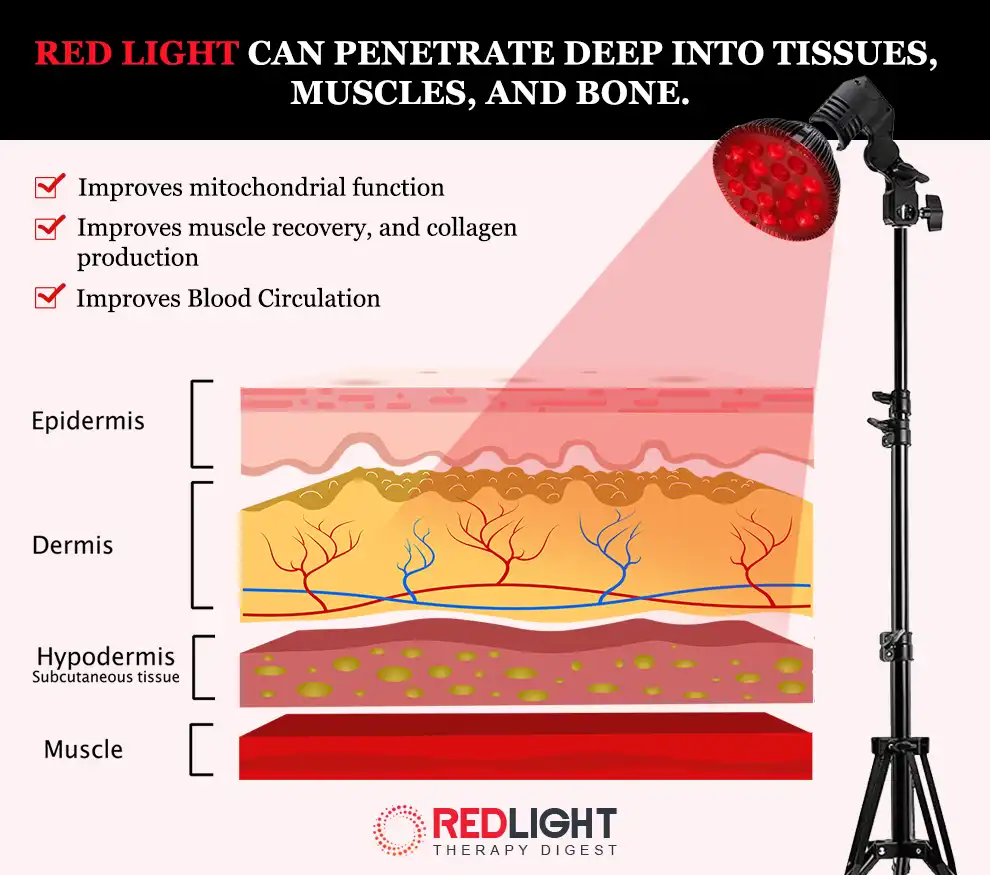 Red light is natural and can penetrate deep into the skin, where the cells can absorb and use it
Red light is natural and can penetrate deep into the skin, where the cells can absorb and use itCategories in which Red Light Therapy for Pain Can Have Effect on:
Pain is a body response that naturally occurs to alert you that you need to cease a certain behavior. When the body is in pain, sensory receptors in the body send a message to the brain through the spinal cord. The brain then processes this information and signals you to stop the activity that is causing you pain. According to research published by Jiatong (Steven) Chen, in 2022, pain is the actual unpleasant sensory and emotional experience that originates from nervous signals in the brain.
Pain exists in three forms;
Acute pain
This is pain that does not last a long time and is attributed to a known cause such as a scraped knee, broken bone, dislocated shoulder, or burns. Although this type of pain can be intense and sharp, it goes away when treated.
Chronic pain
This type of pain is long-term and may last up to six months or longer and the cause can be known or unknown. Chronic pain may cause limited mobility, tense muscle, and low energy in the body. These pains may include arthritis, frequent headaches, low back pains, and nerve damage.
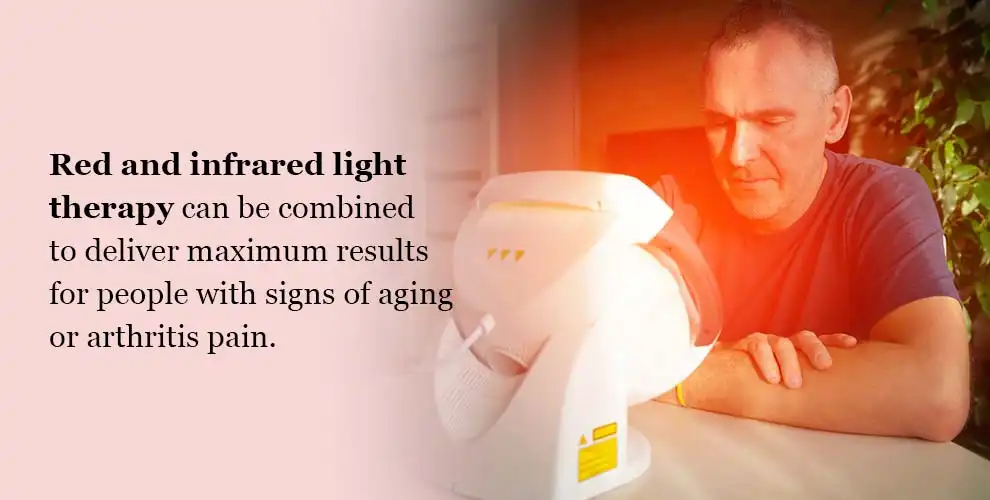
Neuropathic pain
May be caused by a malfunction or damage of the nervous system. This may include infections, accidents, shingles, chemotherapy, HIV, carpal tunnel syndrome, inflammation, spinal nerve compression, and diabetes. You may experience symptoms like electric shocks in the body when in neuropathic pain.
Since the pain can be highly subjective and complex, getting the correct treatment can be a challenge, and using medications for a long time can have adverse side effects.
How Does Red Light Therapy for Pain Relief Work?
Many people all around the world go through the pain and it may be too much that really do not know how to treat it. If you are going through something like that, laser therapy treatment is for you. Although light therapy treatment for pain may be new, it is safe and effective.
Laser therapy or better known as low-level laser therapy, Photobiomodulation, or soft-laser therapy is a mode of pain relief that utilizes light-emitting diodes to stimulate natural healing. While other forms of laser, such as those used in surgery, may cause damage to body tissues, laser therapy is different. Laser therapy uses low energy levels on the skin to stimulate the healing of body tissues. This type of laser is safe, non-invasive, and painless.
Laser therapy uses light-emitting diodes, which emit energy onto the skin. The light is absorbed by body cells to help in protein synthesis and cell division. This in turn helps improve blood circulation in the body to reduce inflammation and relieve pain.
The American Society for Laser Medicine and Surgery reveals that as light units or photons are positioned closer to the skin, they cause chromophores to be activated which consequently stimulate notable changes in skin cells. The research further reveals that you should consult a doctor before using Photobiomodulation for pain relief so that he/she can ascertain that the pain is indeed neuromusculoskeletal.
According to the Journal of Neuroinflammation red light therapy reduces the development of hypersensitivity and improves sensorimotor after spinal cord injury. We also reviewed in our article Biomax red light, which also helps in reducing pain and promotes stronger muscles.
Check out the Nushape red light therapy product for more effective results and the Nushape lipo wrap side effects policy will attract the buyer.
Take a look at some of the best medical-grade red light therapy devices that are affordable and convenient for home use.
What Categories of Pain Can Be Relieved By Red Light Therapy
Red light therapy can stimulate all kinds of cells in the body, including cartilage, ligaments, nerves, and muscle, and this can help treat a number of diseases that may arise. The following conditions may be treated with red light therapy:
Red light therapy for osteoarthritis
Osteoarthritis is a degenerative joint disease that has affected many people across the globe. When the cartilage with protects the ends of bones wears down, it may cause inflammation and pain in the joints. Red light therapy may help alleviate these symptoms and improve joint flexibility. According to the Arthritis Research and Therapy Journal, low-level laser therapy has shown promising effects in the treatment of osteoarthritis.
Red light therapy for back pain
People use red light therapy to help treat acute and chronic back pain. Venom back is the best device for people with chronic back pains as it helps calm inflammation and enhance the healing process. In a randomized controlled study, individuals with chronic lower back pains were treated with the best heat lamp for six weeks. The results showed the patients showed improvements in the reduction of lower back pain.
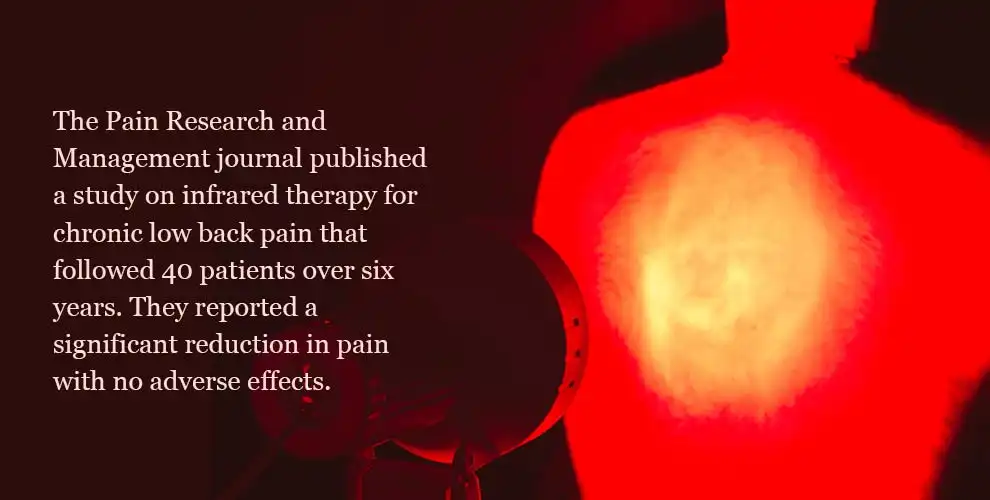
Red light therapy for neck pain
Many people do experience neck pain and it may be attributed to factors like poor posture, injury, and uncomfortable sleeping position, among other causes. Laser therapy makes the skin absorb the light and this helps reduce pain and inflammation. Light therapy enhances the recovery process by stimulating energy production. According to research published by RT Chow and MI Johnson red light therapy is effective in the treatment of chronic and acute neck pain.
In addition to the broader applications of red light therapy, real-life examples underscore its efficacy. Take, for instance, the case of Jeremy Renner, the acclaimed actor. Following a significant accident, Jeremy Renner embraced red light therapy as part of his recovery journey. The therapy played a pivotal role in managing pain, accelerating tissue repair, and aiding overall healing. Renner’s positive experience adds to the growing body of evidence supporting the diverse benefits of red light therapy.
Another area where red light therapy has shown promise is in the treatment of neuropathic pain. Neuropathy, caused by damage or malfunction of the nervous system, can result from various factors such as infections, accidents, chemotherapy, or diabetes. Symptoms may include electric shocks in the body and can be debilitating. Red light therapy for neuropathy targets the affected areas, helping to reduce pain and inflammation while promoting healing and nerve function recovery.
What are the Signs and Symptoms of Inflammation?
Everyone goes through inflammation at one point in his or her life either knowingly or unknowingly. The body naturally develops inflammation to prevent injury, disease or infection from the body. Without experiencing inflammation, you may not heal from certain things. Autoimmune diseases such as irritable bowel disease and arthritis may weaken the immune system by attacking healthy cells. There are two types of inflammation:
Acute inflammation is usually short-term but may be very severe. Acute inflammation symptoms come quickly and may be resolved in less than two weeks. The body bounces back to its original state after recovery. Chronic inflammation is less severe and is generally slower since it may last longer than six months. It may occur with or without an injury and may still progress after the injury has healed.
Some of the common symptoms of inflammation may include;
- redness
- pain
- heat
- loss of function
- swelling
These symptoms may present themselves differently depending on which part of your body is inflamed. Chronic or long-term inflammation may present other symptoms that may affect your body. These symptoms can include;
- Insomnia and constant fatigue
- Mood disorders like depression and anxiety
- Weight gain
- Frequent infections
- Body pains
- Diarrhea, constipation, acid reflux, and other gastrointestinal issues
In rheumatoid arthritis, you may experience fatigue, swelling, and stiffness of joints, limited motion, and tingling and numbness.
Red Light Therapy for Pain Relief and Inflammation Management
Red and near-infrared light therapy has shown effectiveness in the natural treatment of inflammation without the risk of using traditional drugs. In case you have not heard, red light therapy is a safe treatment that uses low-level wavelengths to deeply penetrate the skin and cells. Once the cells are stimulated, it helps reduce oxidative stress and allows the body to generate more energy to support cellular functions. This helps speed up healing, reduce pain and inflammation, and increases body functions.
According to the article published in the National Library of Medicine, low-level light therapy is a therapeutic treatment for skin and joint disease. Low-level light therapy stimulates the growth and repair of tissue, which helps reduce inflammation.
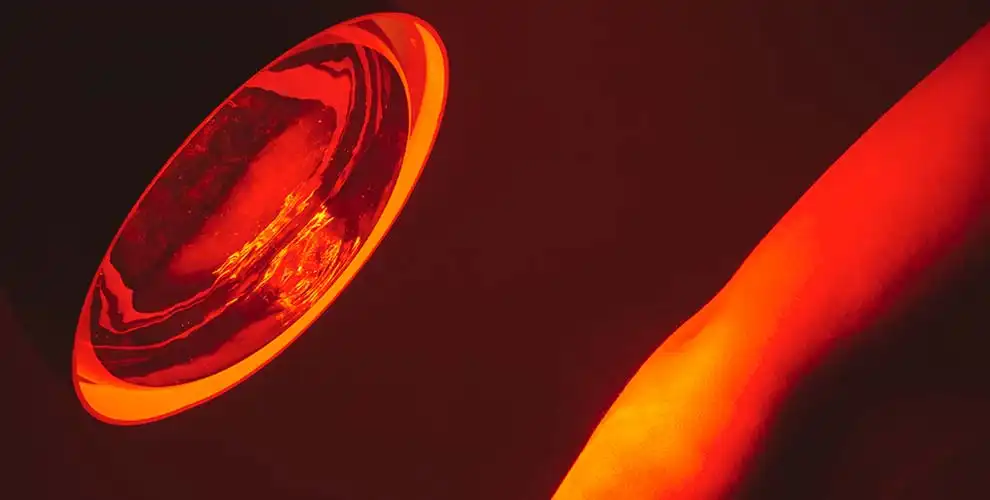
Dr. Hamblin Michael of Harvard Medical School is among the first Photomedicine researchers in the world. He has done a lot of research on the effectiveness of Photobiomodulation in pain relief and skincare. In his research, he explains that red light is “a very mild form of stress that activates protective mechanisms in the cells…for instance when longer wavelengths or visibly red light hits the skin, it nudges mitochondria to make energy more efficiently and boost production of healing anti-inflammatories or disease-fighting antioxidants.”
How Do You Treat Pain Using Red Light?
The device you deploy to treat your pain matters and this is evident from experts’ point of view. That is, by checking on customer experience, and what experts recommend the most, it is easy to identify products that would offer the most success.
Biomax for instance seems to have all it takes to help manage as well as treat body pains.
What is Biomax?
BioMax is a platinum LED therapy light that delivers a clinical-grade experience with different wavelengths of light affecting the body at cellular levels. It has superior LED components such as ultra-high power LED panels for numerous applications and LED therapy lights with unmatched irradiance levels compared to other manufacturers. The red and infrared lights used in BioMax fall within a spectrum of a wavelength range of 630-850 nm, which is exceptionally beneficial. These light wavelengths have the same biological effect on the body as vitamins or antibiotics as they are bioactive in humans. Visible red light within this wavelength range penetrates deep into the skin, and as such gives revitalizing and balancing results for various health conditions.
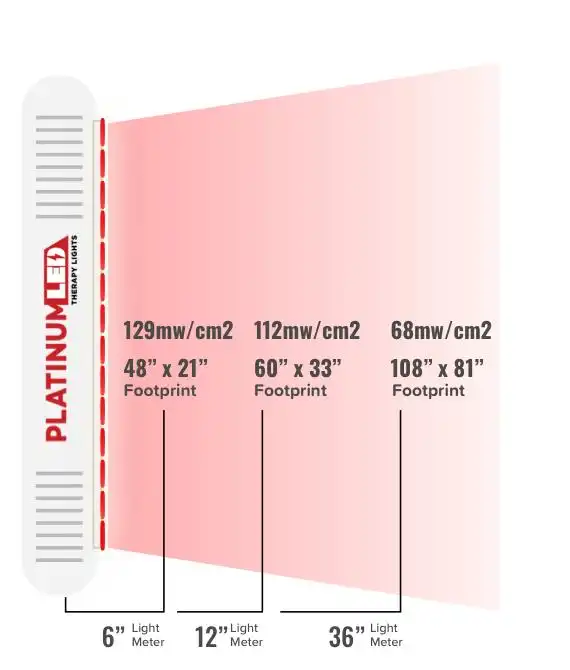 source:alexfergus.com
source:alexfergus.comWhy is Biomax an Effective Option for Pain Relief
Strength – It has twice the power other red lights on the market have with the latter generation BIOMAX being 40% higher than the former. Has the uppermost amount of output compared to other near-infrared or red LED therapy light gadgets.
Spectrum – It has an entirely patent red and near-infrared multi-wave spectral output delivering the highest advanced red-light therapy accessible, tying together six different red and near-infrared wavelengths of light for therapy, that is actually next level.
Quality – Biomax lights are FDA approved as they are manufactured in a facility that is FDA registered as well as UL/ETL certified for electrical safety assurance, and are sanctioned by FDA Class II Medical Devices.
Other Biomax Benefits:
- It has zero EMF exposure – The PlatinumLED engineers refurbished the internal workings of these high-power-driven panels as part of the redesign. The elimination of harmful nnEMF levels while using BioMax was the outcome of their revamp.
- Has an extended wavelength spectrum – 850nm near-infrared light and 660nm red light are the most common wavelength standards in red light panels. However, the new BioMax range has five wavelength – 850nm, 830nm, 810nm, 660nm, and 630nm and these wavelengths are backed by proven scientific evidence showing how enormously beneficial they are to user’s health.
- Has modular design capability – This enables users to pin panels together creating an even larger area of treatment. It is also perfect for those on a restricted budget as it allows for the expansion later option.
- It has an in-built timer and control – The new BioMax panels have a built-in timer clock and a digital controller to allow the selection of the running wavelengths.
- It is easy to use – The new bio max lights work seamlessly with their wheeled rack stands and the optional table top.
Learn why Platinum LED Therapy Lights are considered the most powerful and natural pain treatment method for relieving pain in the comfort of your home.
What Customers say About Biomax
This is one health investment I will use forever! I feel like I have more energy since I started my daily use. My facial skin is blemish free. I use it post-workout as well and have noticed it helps with decreasing my soreness. I love the size of it as well and would highly recommend it.
– Jennifer.
Love owning my own healing red light unit! I use it for my skin, pain in the lower back or stomach, and on my husband’s elbow and shoulder that act up at times. A great investment, easy to move around, and just a great unit so far.
– Brooke.
I have several of their therapy lights and this latest one seems more powerful than my other ones. Focused it lately on an inflamed mid to lower back area and got instant relief. Works great for post-workout recovery when you are able to bath your body in light.
– Michael.
Comparision: Biomax Vs Celluma
BioMax is a platinum LED therapy light that delivers a clinical-grade experience with different wavelengths of light affecting the body at cellular levels. It has superior LED components such as ultra-high power LED panels for numerous applications and LED therapy lights with unmatched irradiance levels compared to other manufacturers. Biomax is also FDA-approved to ensure it is safe for use on the skin.
Celluma approaches pain management is by using light therapy that is backed by scientific research and approved by FDA. The multipurpose all-in-one red, infrared, and blue light systems help target different parts of the body and may help alleviate pain caused by different conditions. Unlike other therapy products like Infraredi on the market, Celluma PRO can contour very near the skin surface for optimal therapeutic effect.
TAKEAWAY FOR BIOMAX VS CELLUMA
Both Biomax and Celluma are light therapy gadgets that use different wavelengths to help deal with pain from different conditions and improve skin appearance.
How effective is red light therapy in pain relieving compared to other pain relief methods
Relieve your body pains naturally and safely using red light therapy. While many people trust red light therapy for aesthetic use such as acne and skin aging, the benefits you get from red light therapy is beyond aesthetic. Most people have not yet known the effectiveness of red-light therapy for pain management. Almost 20% of the American adult population suffers from different types of pain, which make them spend a lot of money on medication.
Scientific research has proven that the human body has the ability to absorb light and convert that light into metabolic energy to help power cellular functions in the body. This may help improve metabolic processes, and cellular performance, and enhance the repair and regeneration of damaged tissue. LED light therapy uses Red, near-infrared, and blue to help eliminate acne and skin blemishes, boost collagen production, improve skin appearance, and promote a youthful glow.
Red and near-infrared light therapy use light of low wavelengths to kindle natural responses in the body, which can accelerate tissue repair, increase circulation, relieve joint stiffness, ease muscle pain, and improve overall cell functions in the body. Wavelength is a factor to consider when it comes to selecting a pain management device. Near infrared bulbs can deeply penetrate the skin into joint and muscle tissues to help reduce pain and inflammation, and improve circulation.
In the visible spectrum of light, various colors of light therapies have shown effectiveness in pain relief. The common types of light therapies have, been explained in our red light therapy article.
Recommended Light Device
FAQs
Q: How long does it take for red light therapy for pain relief to work?
Q: Can I self-treat my body pain at home using red light therapy?
A: You could only find red light therapy pain relieving treatment in spas and dermatology clinics, but that has changed. These days, personal at-home red light therapy gadgets are now available on the market at affordable prices. Unlike other invasive treatment methods, red light therapy is safe, effective, non-invasive, and painless, with no side effects. You may not require training for you to operate these devices.
Small, handheld at-home devices for laser hair removal are also effective for reducing hair growth, promoting facial rejuvenation, and providing pain relief for the wrists, knees, muscles, and feet. Other full-body devices are effective for chronic pain and inflammation, weight loss, muscle recovery, and improving blood circulation in the body. While choosing at-home therapy gadgets, ensure they are approved by FDA, can handle your pain area, is of appropriate wavelength, and has an affordable price.
While this treatment is done in the comfort of your home, there are some mistakes that you should avoid. Some people do not use the device based on the recommended times. Inconsistency will delay your results. Overdoing or underdoing the treatment may also make you not enjoy the full benefits of the device at home. Ensure you select the correct size of the device based on the body part that you want to treat.
Q: How often should you use red light therapy for pain?
A: The question of how often you should use led therapy has been brought up by many patients. The thing is time frame will vary from one user to another. There are people who might need to go through a couple of sessions, while others may feel better with only one treatment session. Most people may start to see visible results after going through 15-minute sessions at least 3-5 times a week for some months. The severity of your condition, your age, and your sensitivity to light will determine how frequently you can use the red-light therapy.
And since we have already put it out there that people are different, it is better to start with just a few sessions a week and gradually progresses from there. You can begin with a 10-minute session during your first week. In case you experience some side effects like skin redness, then you can go down to a few sessions. And, if there are no side effects, you may increase the session time.
Healing is a gradual process and it happens at a cellular level. The body’s cells need time to heal and renew themselves. While red light therapy begins to work immediately after you use it, results will get better after multiple sessions. You may start to see noticeable results from 8-12 weeks.
Q: What types of pain can RLT treat?
A: According to Tabitha Craine, MD, red light therapy is commonly used to treat sunburns, wounds, and scars. Research also supports that RLT is effective in improving skin appearance, reducing hyperpigmentation, and treating wrinkles, and other signs of aging. A research published in the Journal of Laser therapy supports that red light therapy has helped athletes recover from muscle and joint injuries.
RLT has helped relieve pain in conditions like;
- Psoriasis
- Osteoarthritis
- Achilles tendonitis
- Muscle pain
- Joint and neck pain
- Wounds and burns
- Rheumatoid arthritis
- Diabetic foot ulcers
- Bone recovery pain
Conclusion
Dr. Jessie Cheung, a board-certified dermatologist in Illinois, United States supports that red light may Red Light Therapy has been designed as a supportive skin treatment method. You may use it in combination with other treatments offered by your dermatologists to address your skin concerns. Generally, red light therapy is an effective treatment for pain management. While some people have reported burns and blisters from using laser treatment, it may be due to the fact that they fall asleep during treatment sessions.
Compared to other forms of laser treatment, red light therapy may cause some damage to the eye. It is important that you use eye protection during the therapy sessions. Experience the soothing and calming effects of red-light therapy at home by purchasing devices that are safe to use at home. It is important that you consult your dermatologist before you begin red light treatment.

